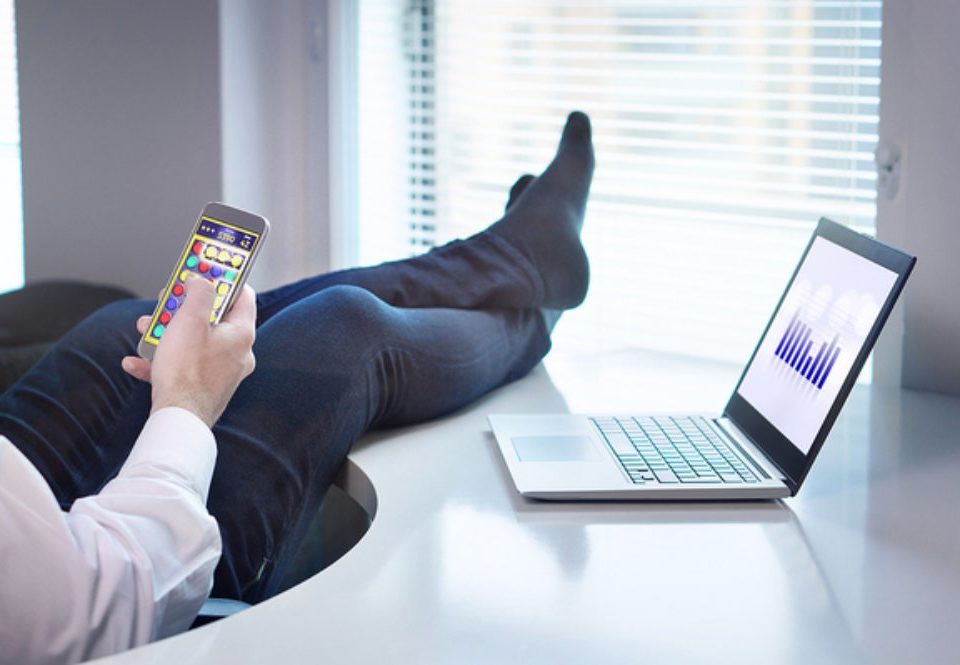
Business Owner’s Guide to Employee Internet Rights
July 20, 2021
How to Handle Employee Time Theft
August 5, 2021Encourage Employee Buy-In on Employee Time Tracking Software in 2021

Employee monitoring has been on the rise for years, regardless of anything else happening in the country. But with the emergence of a global pandemic and the dramatic increase in work-from-home and remote work positions, there’s even more reason for employees to expect their attendance monitored via employee time tracking software.
It’s not surprising. While some companies have always had remote work or work-from-home positions, other companies are figuring it out on the fly. And even companies that previously had some of those positions are now finding ways for more of their employees to work outside of the office. It only makes sense that they’d want to monitor and be certain that the work is being accomplished the way they want.
And there’s every chance that the work-from-home phenomenon will continue even after the immediate danger of the pandemic ends. Work-from-home was trending in this direction before the pandemic, and in light of recent events, many employees will feel safer about doing their work remotely. But how will they feel about the issue of being monitored in their homes?
The truth is that employee time tracking software has benefits for the employee as well as the employer. And by emphasizing these benefits to employees, you can secure their cooperation and even enthusiastic participation in monitoring activities. Take a look at what employees can get out of remote work time tracking and how you can use these activities to encourage employee buy-in.
Fewer Time-Wasting Meetings

Meetings are a necessity to make sure that everyone stays on the same page and everyone is informed about where a project stands – and where they stand in relation to a project.
But are they really a necessity?
With employee monitoring software solutions that include time tracking, the need for regular meetings and status updates with superiors is reduced. Productivity monitoring allows anyone who’s interested to look and instantly see where various employees are in the stages of a given project.
That means that employees don’t need to take time away from their actual work in order to give their bosses or teams updates on their projects. This gives employees more time to focus on their actual work and a greater feeling of autonomy. It simultaneously benefits employers by raising employee productivity and giving them more control over the progress of important projects. And if you notice that an employee isn’t performing up to speed, there’s nothing stopping you from meeting with them individually without the need to distract other employees from their tasks in the process.
Better Flexibility in Scheduling
You may find that employees who have recently transitioned to working from home are beginning to wonder why they need to continue working a regular 9 to 5 schedule. It’s a good question! Currently, employees working from home because of the pandemic might not just be employees during these hours, they might also be caring for children who can’t be in daycare, teaching children who can’t physically attend school, or even caring for older or more vulnerable family members who are at increased risk of illness.
Pandemic conditions won’t be in play forever, but the fact remains that some employees will always be responsible for younger or older family members, even if their number is lessened outside of the current health crisis, and other employees will also have reasons why they might work better with more flexible schedules, ranging from second jobs to plain old personal preference. So do your employees really need to work the same schedule from home that they would have in the office?
This answer is largely dependent on the specific industry and the employee’s role within that industry. In some cases, jobs do simply need to be done when they need to be done, and the flexibility just isn’t there. But in other cases, tasks can be completed just as easily at 8 pm as they could at 2 pm if that’s when the employee is comfortable doing them.
With better employee productivity tracking software, you can allow your employees more flexibility in their schedules. As long as you can check in and see how your employee is performing and that they’re completing tasks on time, there may not be a reason why they can’t work on a schedule that makes sense for them.
Different Payroll Solutions

No matter how much an employee cares about their company’s mission, it’s a fact that employees need to get paid, and the paycheck is often the primary motivation for taking a job. What if time tracking software solutions could affect how often employees get paid?
Weekly pay, as opposed to biweekly or monthly pay, can be a big draw when you want to attract top-tier talent. Just knowing that you won’t make them wait for their money can put you far ahead of competitors.
It comes in handy if your company employs freelancers or contractors as well. In some fields, freelancers or contractors are used to having to wait weeks or months to get paid for their work. If you can ensure that your contractors and freelancers will be paid in a timely manner, without hassle, they’ll be much more inclined to accept projects with your company. If you let those workers know that it’s productivity tracking software solutions that will make it possible for you to monitor their work and keep track of it so that you can pay them in a timely manner, you’ll find that those workers will be excited to take advantage of productivity tools in a way that allows them to do the things they do best and get paid for it.
The increase in working from home creates more demand and more use cases for monitoring employees working from home. But that’s not a bad thing; it could be the best thing for your company.
To find out more about how employee time, attendance & productivity tracking will work in your organization, check out InterGuard’s three minute demo video today.



